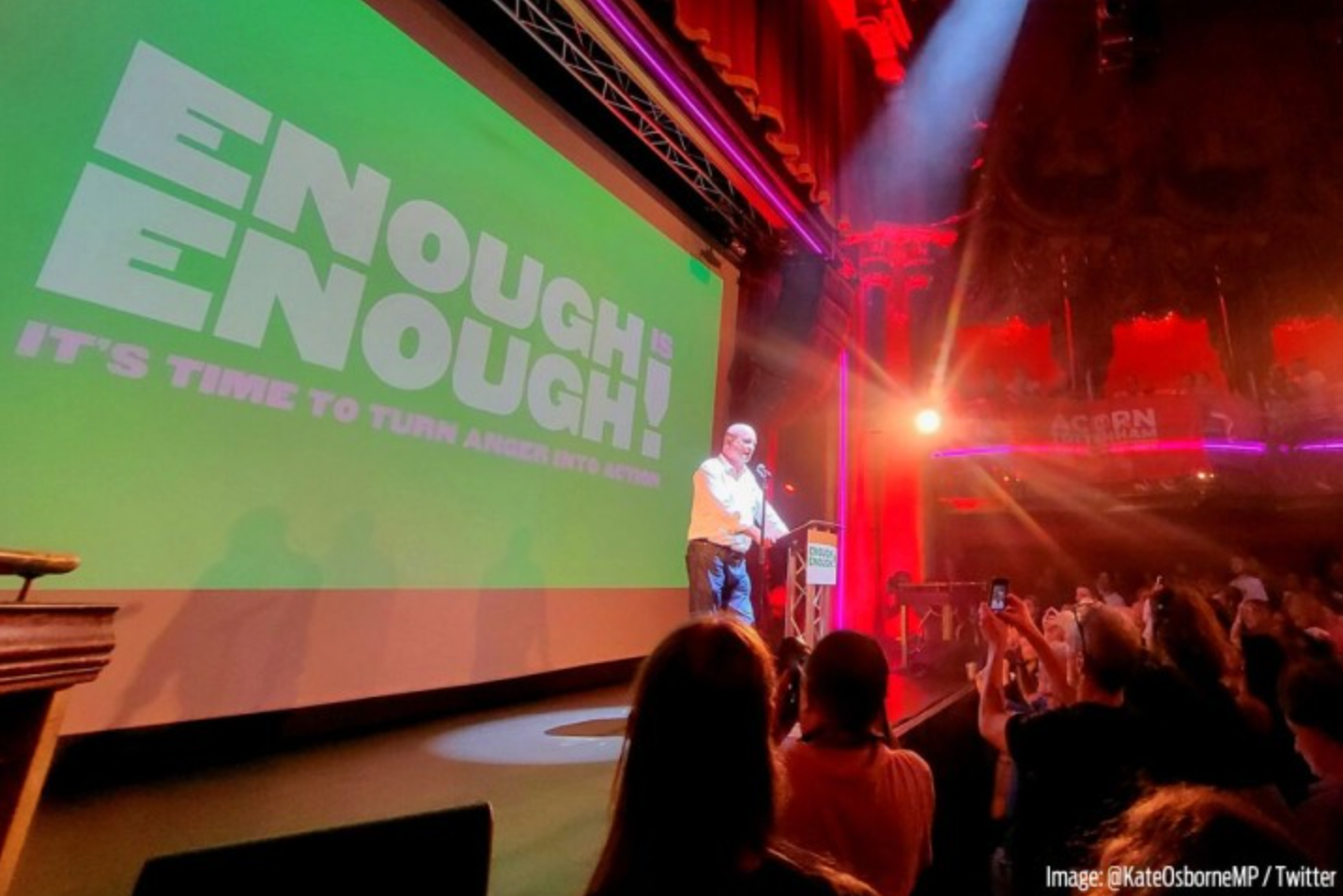Sector after sector of workers are joining the growing strike wave. Further coordinated walkouts are in store, following Wednesday’s day of action. To strengthen the movement, these struggles need to be united and organised from top to bottom.
Wednesday 1 February saw around 500,000 workers taking strike action over pay and conditions, and against the Tory anti-union laws.
The last time this many workers walked out together was during the 2011 public sector pensions dispute. But the difference between now and then is like night and day. Now, there is over a decade of accumulated anger and discontent exploding onto picket lines and into the streets.
The ruling class recognises this. That is why the Tory government is preparing for battle with their latest draconian legislation against the right to strike.
This week, half a million workers went on strike - an historic day for the class struggle in Britain. But now we must face the question: what is the way forward?
— Socialist Appeal (@socialist_app) February 3, 2023
Here, Dylan explains why you should join Socialist Appeal and help us build a fighting, revolutionary leadership. pic.twitter.com/STQjaS3ogt
Unite general secretary Sharon Graham commented recently that the Tories are “waging a forever class war”. We completely agree.
It is necessary for the labour movement to prepare for war also. The bosses and their representatives are getting organised. And so must we.
Coordinated action
Already, trade union leaders have announced that the next big offensive will take place on 15 March, to coincide with ‘Budget Day’.
 Recent moves to coordinate strike action are a welcome step forward / Image: Socialist Appeal
Recent moves to coordinate strike action are a welcome step forward / Image: Socialist Appeal
These moves to coordinate strike action are a welcome step forward. They are a recognition of the fact that the Tories’ anti-union laws are a threat to the whole of the organised working class. Only united action can defeat this.
Not everyone at the top of the trade union movement feels the same way though, it seems. For instance, Pat Cullen, leader of the Royal College of Nursing (RCN), explicitly ruled out joining the 1 February day of action.
“Our dispute is about the nursing profession and doing a deal for nursing is my only priority,” Cullen told the Guardian. “My members spoke very clearly to give the RCN a unique mandate for strike action.”
Consequently, nurses are next set to strike on 6 February, alongside ambulance workers.
This attitude contrasts with the militancy of rank-and-file nurses, however. A NursingNotes survey found that 71% support escalated action. And coordination with other unions – particularly in the public sector – would surely be welcomed as part of this.
The fact is, whether the union leaders like it or not, their members – and the wider working class – increasingly recognise that the problems they are fighting all have a common enemy: the Tory government and the profit system they protect.
Grassroots organisation
Despite the strike wave growing since last summer, however, the movement still lacks a serious and organised force to link these struggles together and connect them to a political programme.
 ‘Enough is Enough’ has largely gone quiet since October last year / Image: KateOsborneMP Twitter
‘Enough is Enough’ has largely gone quiet since October last year / Image: KateOsborneMP Twitter
The ‘Enough is Enough’ campaign, launched last August, showed the potential to play this role, providing a lightning rod around which the energy of workers and youth could coalesce.
The campaign initially tapped into the radical mood that exists, with tens of thousands attending rallies, and hundreds of thousands signing-up in support.
With leading figures from the trade unions backing it, linking the strikes to demands aimed at tackling the cost-of-living crisis, ‘Enough is Enough’ could have easily established groups across the country to help organise local grassroots activists.
This possibility was hinted at on 1 October, when the campaign helped to organise rallies and protests in over 50 towns and cities in support of striking posties and rail workers.
Since then, however, ‘Enough is Enough’ has largely gone quiet. And there have been no moves to launch or organise local branches.
Similarly, other campaigning organisations like the People’s Assembly and Momentum are nowhere to be seen locally, for the most part.
At one point, at the peak of the anti-austerity movement or the Corbyn era, these organisations also had hundreds – and even thousands – attending their meetings and events. But they have long since become moribund. Momentum today is even in a “serious” financial crisis.
As a result, at a grassroots level, trade unionists and activists lack a nationwide campaign to coordinate their fightback. This is hamstringing the movement, and needs to be rectified in order to strengthen and advance the struggle.
Strike committees
Within the unions, although there are increasing levels of coordinated action, often this is simply announced from the top, with little discussion of how rank-and-file members can link up locally or within the workplace.
 During some recent strikes there have been local efforts to discuss and organise between unions / Image: Socialist Appeal
During some recent strikes there have been local efforts to discuss and organise between unions / Image: Socialist Appeal
Nevertheless, there is an instinctive appetite for such unity. During some recent strikes – such as those at the University of Leeds or Fawley refinery – there have been local efforts to discuss and organise between unions.
Here and there, trades councils are also starting to reawaken, bringing together representatives of different unions, and organising local rallies and solidarity efforts. This should be built upon going forwards.
Similarly, in some areas, in advance of the 1 February strikes, teachers and parents set up local solidarity networks to organise support for the NEU’s picket lines.
All of this shows the enormous creativity and potential strength that exists amongst the working class, and how workers will move to unite – across unions and workplaces, and within their communities – to fight back.
But unfortunately, there is not yet a wider, nationwide concerted effort to organise workers across different unions – whether this be in the same industries, workplaces, or localities.
To strengthen, maximise, and win the fightback, therefore, what is required are cross-union strike committees that can mobilise and coordinate action at a rank-and-file level.
Lessons of the past
We need to learn the lessons of the past. Previous efforts to organise grassroots activists ended up concentrating power at the top, leaving members disenfranchised, disillusioned, and disempowered.
Related to this, their bureaucratic leaderships consistently restricted their demands to stay well within the confines of capitalism.
Instead of learning from history, organisations like Momentum were doomed to repeat it: capitulating to the right wing of the labour movement; and falling for the divide-and-rule tactics of the ruling class.
All of this flowed from the woolly, weak, reformist politics of these official ‘lefts’. In truth, they have no confidence in the power of the working class to change society. Instead, they believe that capitalism can be patched up; made ‘nicer’ and ‘kinder’.
In turn, instead of mobilising and organising workers to fight against the bosses’ system, these ‘left’ leaders go down the path of least resistance, seeking compromises at every turn.
The result is that there is now – in the middle of this deep crisis of British capitalism and explosion of the class struggle – an enormous vacuum on the left.
Revolutionary leadership
Huge class battles portend. The period ahead will be unlike any that most workers will have ever experienced. The consciousness of millions will be shaken up and transformed.
 On the basis of these struggles, a new left is starting to emerge / Image: Socialist Appeal
On the basis of these struggles, a new left is starting to emerge / Image: Socialist Appeal
On the basis of these upheavals, a new left will be forged – one with the iron determination to fight the bosses, the Tories, and their rotten system.
What is required above all is the building of a revolutionary organisation, armed with a bold socialist programme, that has roots in the working class; a Marxist tendency that can provide direction and leadership in the ranks of this resurgent labour movement.
This is what Socialist Appeal is attempting to build. We urge you to join us in this crucial task.

